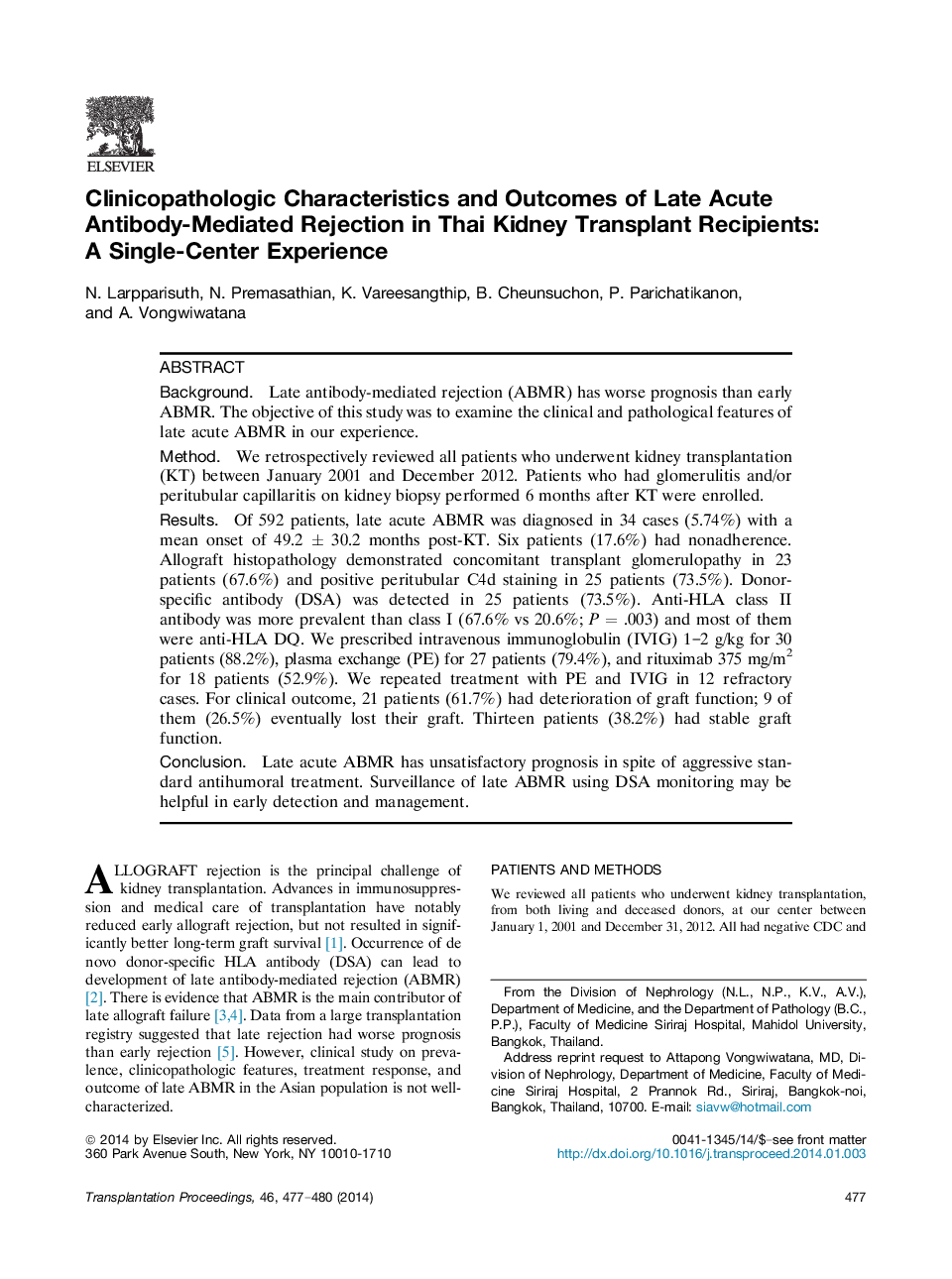| Article ID | Journal | Published Year | Pages | File Type |
|---|---|---|---|---|
| 4258764 | Transplantation Proceedings | 2014 | 4 Pages |
BackgroundLate antibody-mediated rejection (ABMR) has worse prognosis than early ABMR. The objective of this study was to examine the clinical and pathological features of late acute ABMR in our experience.MethodWe retrospectively reviewed all patients who underwent kidney transplantation (KT) between January 2001 and December 2012. Patients who had glomerulitis and/or peritubular capillaritis on kidney biopsy performed 6 months after KT were enrolled.ResultsOf 592 patients, late acute ABMR was diagnosed in 34 cases (5.74%) with a mean onset of 49.2 ± 30.2 months post-KT. Six patients (17.6%) had nonadherence. Allograft histopathology demonstrated concomitant transplant glomerulopathy in 23 patients (67.6%) and positive peritubular C4d staining in 25 patients (73.5%). Donor-specific antibody (DSA) was detected in 25 patients (73.5%). Anti-HLA class II antibody was more prevalent than class I (67.6% vs 20.6%; P = .003) and most of them were anti-HLA DQ. We prescribed intravenous immunoglobulin (IVIG) 1–2 g/kg for 30 patients (88.2%), plasma exchange (PE) for 27 patients (79.4%), and rituximab 375 mg/m2 for 18 patients (52.9%). We repeated treatment with PE and IVIG in 12 refractory cases. For clinical outcome, 21 patients (61.7%) had deterioration of graft function; 9 of them (26.5%) eventually lost their graft. Thirteen patients (38.2%) had stable graft function.ConclusionLate acute ABMR has unsatisfactory prognosis in spite of aggressive standard antihumoral treatment. Surveillance of late ABMR using DSA monitoring may be helpful in early detection and management.
